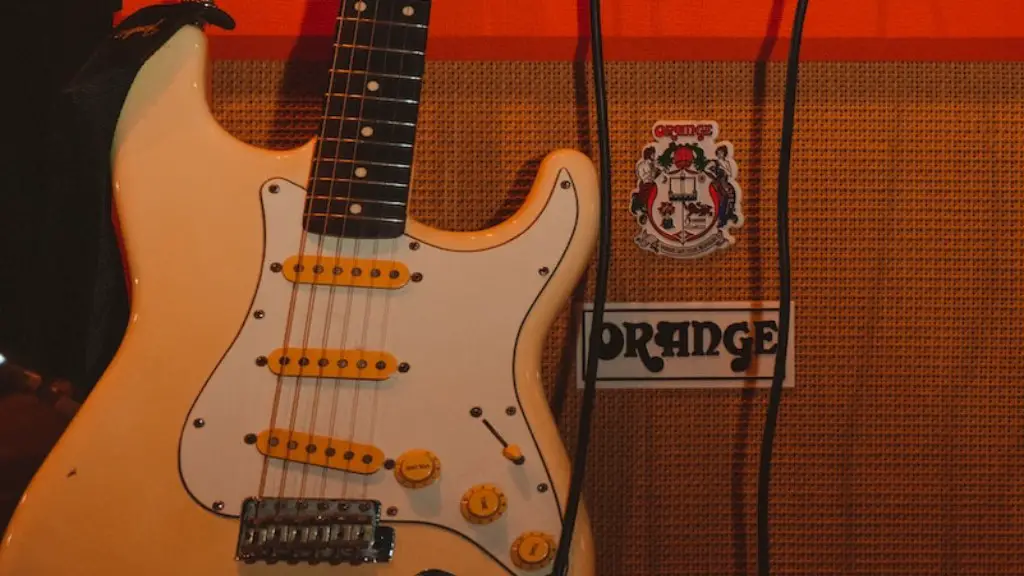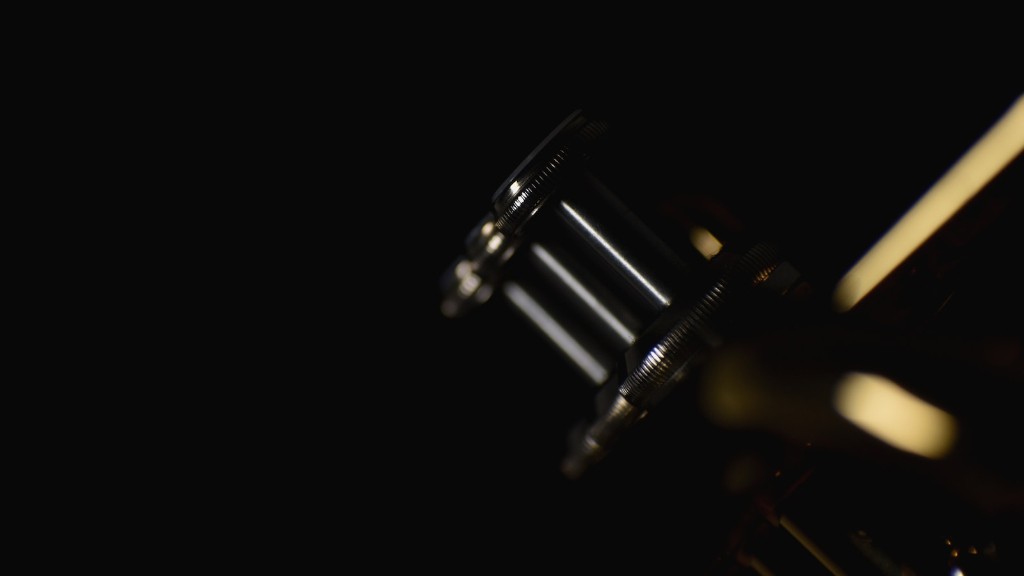Fret buzz on an electric guitar can be a frustrating issue to deal with. It can be caused by a variety of things and can range in intensity. Fortunately, it is usually an easy and relatively inexpensive fix.
The first step is to check the guitar’s setup. This includes checking the string height, neck relief, pickup height, and intonation. If any of these are out of spec, they should be adjusted accordingly. You should also check for any sharp fret ends or loose frets which will cause buzzing when played.
If the setup is correct, it may be necessary to change the strings or even replace them entirely if they are worn out. New strings often eliminate buzzing as they have more tension and are less likely to vibrate in an undesirable way. Finally, check that your guitar’s pickups are working correctly and that all components such as pots and switches are functioning properly.
By following these steps you should have no problem getting rid of fret buzz on your electric guitar!
Adjust the Guitar Bridge
Fret buzz is an annoying and potentially damaging problem that can occur when playing an electric guitar. It’s usually caused by the strings hitting the frets too close to the fretboard. Luckily, it’s relatively easy to fix with a few simple adjustments to the bridge. The first step is to check the action: Measure from the top of the 12th fret to the underside of each string. If it’s too low, then you may need to adjust your truss rod or bridge height. If it’s too high, then you may need to adjust your bridge saddle height. You should also be sure to check your intonation, as this can affect how close your strings are to the frets. Finally, be sure to check your nut height and nut slots as well as any sharp edges on your frets that can cause buzzing.
Making these small adjustments can significantly reduce fret buzz, allowing you enjoy playing your electric guitar without any annoying buzzing or rattling noises.
Getting Rid of Fret Buzz on an Electric Guitar
One of the most common issues for electric guitar players is fret buzz, which is caused by strings vibrating against the frets due to incorrect string height. To get rid of fret buzz, you need to adjust the action of the strings. This can be done by adjusting the truss rod or bridge saddles. If you have a bolt-on neck, you can also adjust the height of the neck pickup to get better clearance between the strings and frets. To check if your guitar needs an adjustment, play each note on each string and listen for buzzing. If any notes buzz, then it’s time to make adjustments.
Adjusting a truss rod involves loosening or tightening it with a truss rod wrench. Loosening it will create more space between the strings and frets, while tightening it will reduce this space. Adjusting bridge saddles is also relatively simple; just use an Allen wrench to raise or lower them as needed until there is no more buzzing. With a bolt-on neck guitar, you can adjust the height of your neck pickup by turning its screws clockwise or counterclockwise with a Phillips head screwdriver. It may take some trial and error before you find the perfect setting for your guitar.
Getting Rid of Fret Buzz on Electric Guitar
Fret buzz is an undesired sound that can occur when playing an electric guitar. It is caused by the string vibrating against the frets and can be both annoying and distracting. The good news is that fret buzz can often be resolved with a few simple steps.
The first step is to check the guitar nut. The nut is located at the top of the neck, just below the headstock, and holds the strings in place. If it’s too low or uneven, it can cause fret buzz. The best way to check the nut is to use a ruler or a set of feeler gauges to measure its height.
The next step is to adjust the truss rod, which runs along the length of the neck and helps keep it in shape. If it’s too tight, it will cause an increase in string tension which can lead to fret buzz. You can adjust this rod with a specialized tool.
Finally, check your strings for any damage or dirt buildup and replace them if necessary. Dirty strings or ones that are worn down will cause fret buzz more easily so make sure your strings are clean and in good condition before playing your guitar.
By following these simple steps, you should be able to get rid of any unwanted fret buzz on your electric guitar quickly and easily.
Getting Rid of Fret Buzz on an Electric Guitar
Fret buzz is a common problem for electric guitarists. It occurs when the strings are not properly adjusted or maintained, resulting in an unwanted humming or buzzing sound. To get rid of fret buzz, you’ll need to check and adjust your strings as well as clean and polish your frets and fretboard. Start by inspecting your strings for any kinks, rust, or other damage that may be causing the buzzing. If you find any issues, replace the string with a new one. Next, check the height of your strings relative to the frets. If they are too low, you can raise them by adjusting the truss rod or bridge saddle. Finally, make sure to keep your frets clean and polished so that there is no interference with string movement. Taking these steps will help ensure that your electric guitar sounds great without any unwanted buzzing!
Taking care of your electric guitar’s strings is essential for achieving a good sound without fret buzz.
Getting Rid of Fret Buzz on Electric Guitar
Do you hear a buzzing noise while playing your electric guitar? Fret buzz is a common problem that plagues many guitar players. It can be caused by a number of things, but the most common culprit is improper setup. Fortunately, fixing fret buzz on your electric guitar is not as difficult as it may seem.
First, check to make sure your strings are properly stretched and that your bridge and nut are correctly adjusted. If everything seems to be in order, then you may need to lower the action on your guitar by adjusting the truss rod. If you’re not comfortable doing this yourself, take it to a qualified technician for help.
To further reduce fret buzz, try using heavier gauge strings or filing down the frets. You can also check if any of the frets need to be leveled or crowned. All of these steps can help reduce or eliminate fret buzz on your electric guitar and get you back up and playing in no time! Remember to take your time and don’t rush through these adjustments.
Check and Adjust Your Pickups
Fret buzz can be an annoying issue for electric guitar players. If your guitar is buzzing and you can’t figure out why, it might be time to check and adjust your pickups. Pickups are the magnets that pick up the vibrations of the strings and amplify them through your amp. Poorly adjusted pickups can cause fret buzz, as well as undesirable tones and sounds. Start by examining the height of each pickup with a ruler or measuring tape. The ideal height is usually between 1/16″ and 1/8″. Adjusting the height is relatively easy; just use a Phillips head screwdriver to turn the screws on either side of each pickup until you reach the desired height.
If adjusting the height doesn’t take care of any buzzing, you may need to adjust your pickups’ pole pieces. Pole pieces are small magnets located beneath each string on a pickup that helps it pick up sound from that specific string. Use an Allen wrench to adjust them so they are even with one another. After adjusting your pickups, give them an auditory test. Play a few notes on each string while listening for any buzzing or odd-sounding notes. If you still experience fret buzz, consider taking it to a professional luthier for further adjustments or repairs.
Final Words
In conclusion, fret buzz is an annoying and frustrating problem for electric guitarists, but it doesn’t have to be! With some basic troubleshooting steps and understanding of the causes, you can quickly get rid of fret buzz on your electric guitar. The most important thing is to make sure your guitar is properly set up and maintained. If you’re still having trouble with fret buzz, you should consider taking your guitar to a professional for further advice.
No matter the cause of the fret buzz, utilizing these tips can help you get rid of the annoying sound while improving your overall playing experience.





